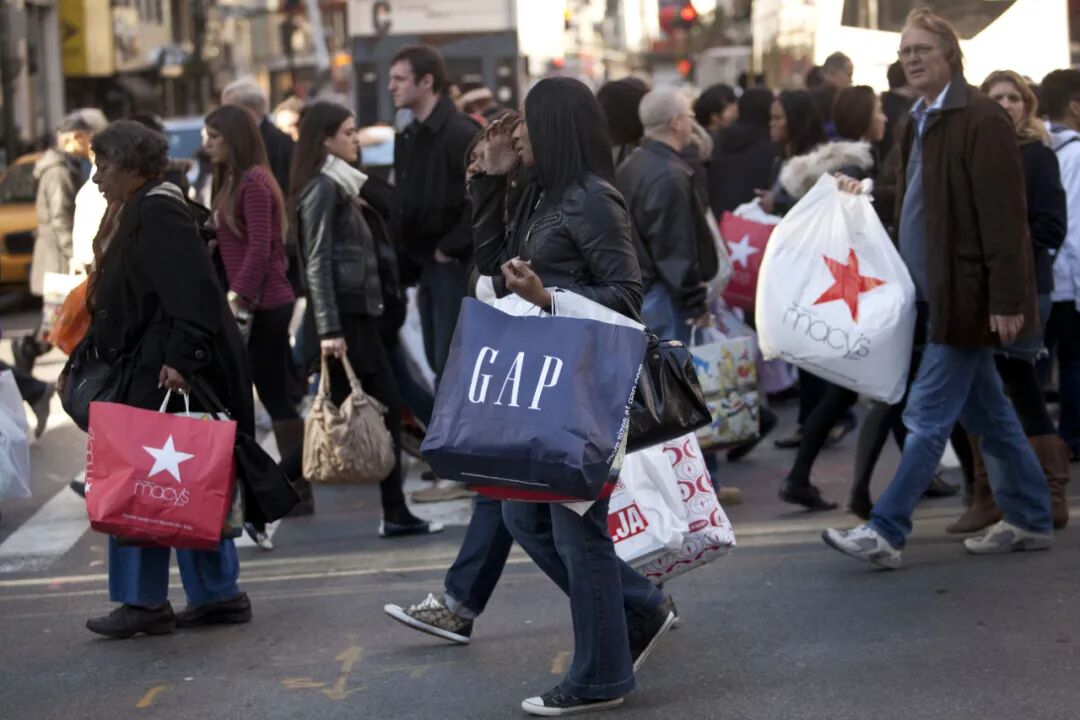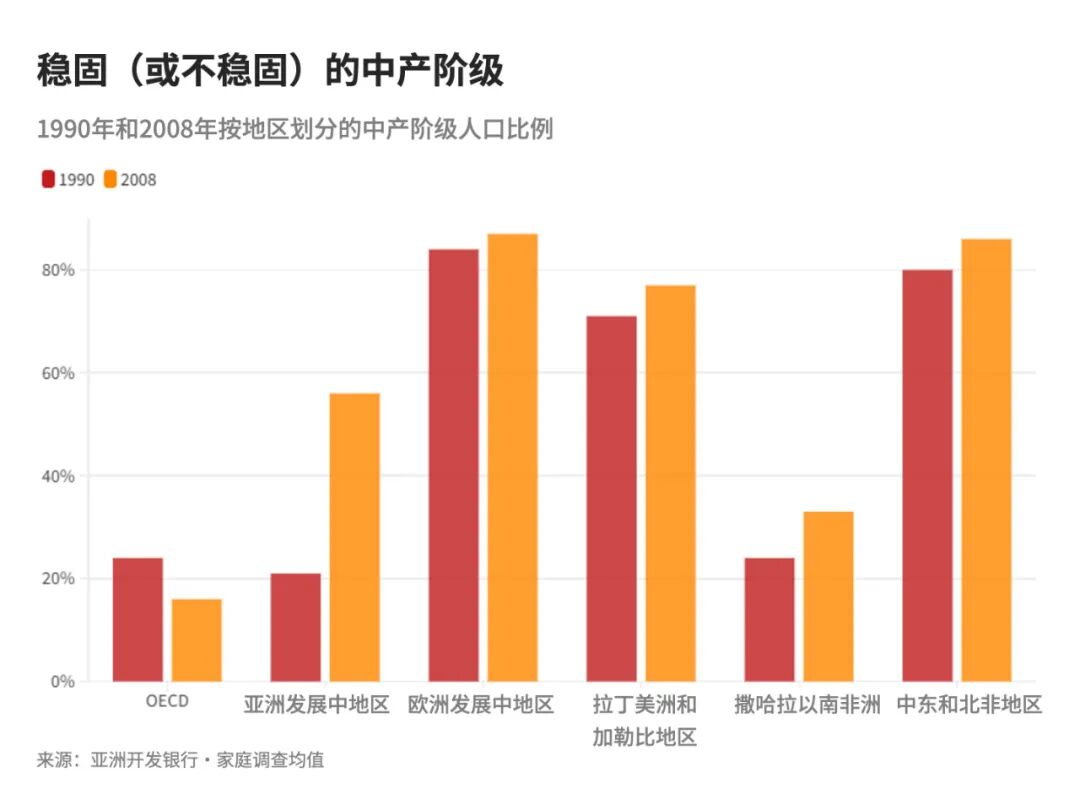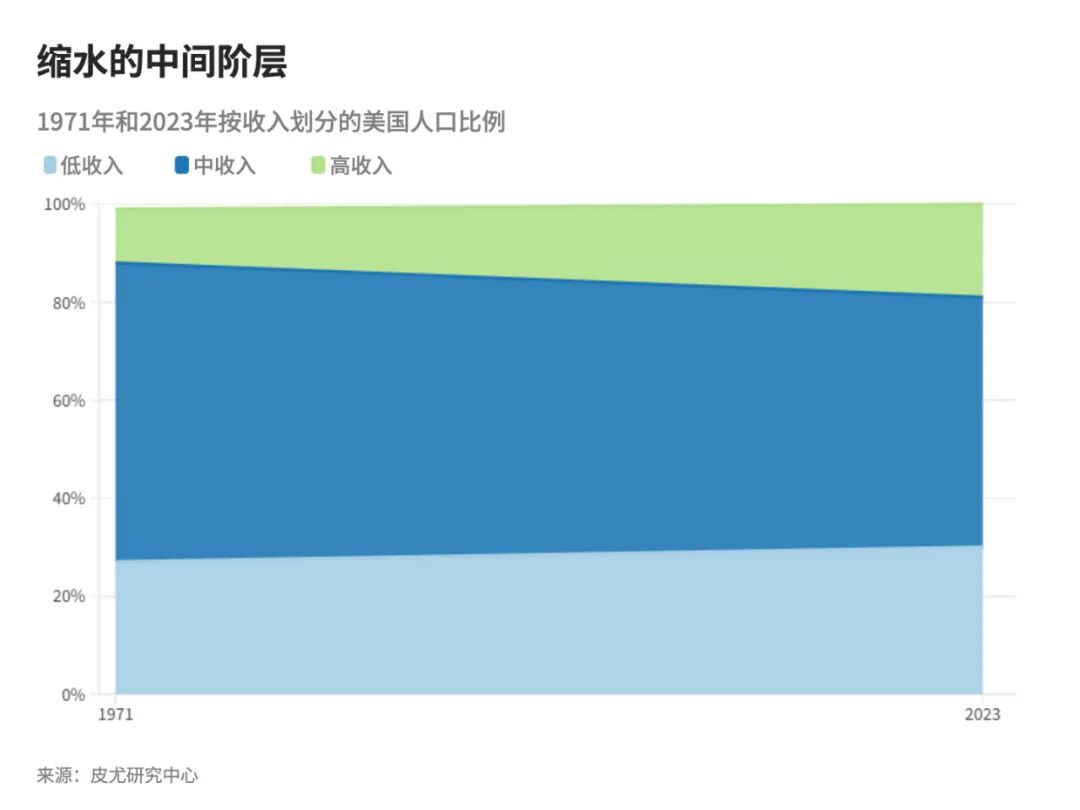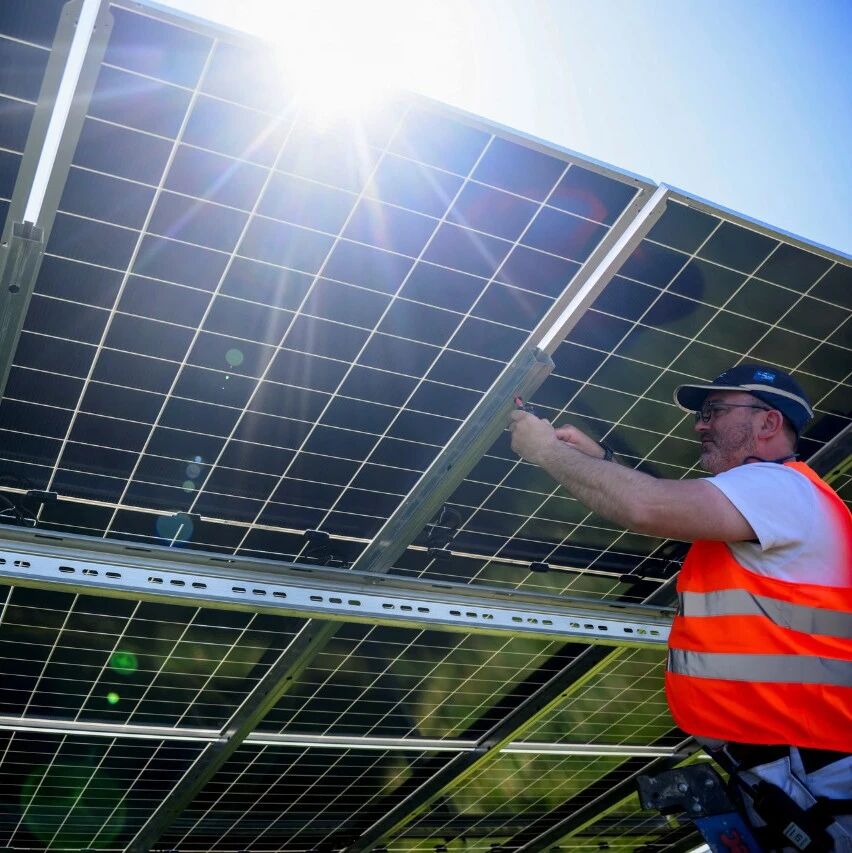

Proponents of middle-out economics argue that consumption by the middle class must flourish.
Image source:REUTERS/Andrew Burton
John Letzing
Digital Economics Editor at the World Economic Forum
- A new analysis reveals that today, the wealthiest Americans play a far more significant role in the nation's economy than they have in recent decades.
- Meanwhile, in the United States and other regions, the middle-class population is shrinking.
- However, some countries are currently implementingmiddle-outMeasures that many economists view as crucial for healthy growth.
CostcoPerhaps the most famous isA $1.5 hot dogAnd large-packaged private-label products. But this U.S. retail chain is also steadily selling some very different items, such asRolex watches, diamonds, and Dom Pérignon champagne
Wealthy consumers might beCostcoHowever, a surprising part of the business is that they’ve now become an indispensable pillar of the entire U.S. economy. According toA recent analysis, Top earners in the United States10%The group contributed nearly50%Total expenditure, compared to30Last year's36%Has seen a slight increase. Wealthy families are experiencing thisConsumption-driven economyThe middle class now bears a larger share, while spending by middle-class families has already declined.
One possible reason is the decline in the middle-class population. In the United States, the proportion of the middle class has already fallen from1971Of the year61%Falling to around 51%In Europe, a recent study found that in the past15Over the past year, the middle class in EU countries has alreadyShrunk by nearly two-thirdsEven among the rapidly growing middle class, onceIt once seemedUnshakable Asia, and people are also beginningConcernCan the middle class recover from the pandemic's impact?StagnationRecovering in the middle.
Formiddle-outFor supporters of economics, this is not good news.They statedA truly healthy economy is one where the middle class thrives; enabling more people to afford and buy more goods can lay a broader foundation for economic growth.
“Someone like me can only own a limited number of yachts, planes, or other similar items.” Driving the creation of “middle-outA venture capital expert in "economics" terminologyOnce wrote“My annual income is roughly at the median level of U.S. household income.”1000Twice as much, but I won't be buying it.1000Double the product."

In Asia, the rapid growth of the middle class was once considered unshakable.
Image source:World Economic Forum
Recently, inRadio Davos PodcastMeanwhile, when Harvard University economistsDani RodrikWhen asked about one issue the leader should prioritize this year, he chose "the state of the middle class."
He said, "We need to seriously reflect on our approach."
RodrikOthers have specific ideas about how to revive the middle class. Rather than struggling to reinvigorate the manufacturing workforce, they advocate for supportingWorker demand will inevitably decline.A modernized factory can’t simply ignore reality—especially when, in many places, reality itself is overwhelmingly vast.Service industry
Rodrikstates that ensuring service-sector jobs haveHigh qualityCompetitive salaries, benefits, and working conditions can help revive and expand the middle class, while also boosting consumer spending among its members.
However, the dream of cultivating a large pool of highly paid workers skilled in crafting durable goods remains hard to let go.
The previous U.S. administration sought to achieve this throughIndustrial PolicyTo help achieve this goal, incentives will be introduced to encourage the construction of factories that hire local workers. The current government shares a similar objective, but its approach involves imposing rather than offering incentives.A large number of protectionist tariffs
The last time in the United StatesSo dependentTariffs, though they created more manufacturing jobs in the country over a century ago, alsoWeakened overall labor productivityThis time, tariffs have led to rising food and energy prices.ExpectedThis will have a particularly severe impact on middle-income groups.
Of course, even if a country succeeds in attracting more manufacturers to set up factories domestically, it’s only halfway to success. Taiwan’s chipmaker TSMC (TSMC) Promised to invest billions of dollars in building a factory in Arizona, USA, but simultaneously brought in components from Taiwan.About half of the workersTo truly uplift the middle class, we must provide something far more fundamental than "potential job opportunities," such as technical education.
Pushing forward in adversitymiddle-out
FromPodcastToComic books, supporters have tried almost every possible method to supportmiddle-outMethodology defended. Their mission seems to be growing increasingly urgent.
For several decades prior to 2019,BySome of the wealthiest countries in the worldThe composed OECD (OECD) in which the growth of median income outpaced that of the wealthiest10%The average income of the population has fallen by one-third.
Since2011Starting this year, the global middle class has been growing at approximately per year5400The pace of tens of thousands is steadily increasing. But2020The pandemic nearly brought everything to a standstill, and this growth followed suit.Stop
Indonesia's middle class once reachedApproximatelyThe combined size of the middle classes in the Philippines, Malaysia, Thailand, and Vietnam—though resilient enough to withstand the initial impact of the pandemic—failed to recover fully from pre-pandemic levels as the crisis deepened.22%Drop toLast year's 17%
In Europe,According to estimatesThe middle class in various countries, such as Sweden, Bulgaria, and Malta, is...2007-2022has significantly decreased over the years. Today, Europe may have to shift its fiscal focus away from social securityShifting focus to national defenseThis could lead to a further decline in the number of middle-class individuals.According to the OECDIn some of Europe's largest economies, social safety nets such as unemployment benefits help reduce income instability.42%Meanwhile, unstable income can push people out of the middle class.

The U.S. isn't the only place where the middle class is shrinking.
Image source:World Economic Forum
Despite facing challenges, some countries are still making progress throughmiddle-outStand out in efforts to drive growth.
Since2018Since this year,MexicoThe government has raised the minimum wage.Increased by more than three times, withOutpace inflation, and stipulates increasing the number of private sector employeesNumber of paid vacation daysA recent studyPension System ReformEnsured that retirees can receive a pension equivalent to their pre-retirement salary.100%Pension plans.
Mexico's middle class has already surpassed that of countries with larger populations, such as Russia—and this trend is expected to continue over the next decade.Expected to continue growing
In Spain, the size of the middle class is also growing, which aligns withBroader social cohesion and institutional functioningClosely linked. Local income inequality levels have alreadyReturning to pre-pandemic levels
If a place wants to help people stay in (or join) the middle class, there are several universally applicable areas of focus.One of them could beUsing artificial intelligence asEnhancing human productivityA tool, not a replacement for humans.
Alternatively, considering that high tariffs and protectionism have traditionallyCausing the most severe impact on middle- and low-income groupsNowadays, it's also unlikely that a different outcome would emerge. Especially as the gap continues to widen, even billionaires are increasingly…By the super-billionaireMore than.
Perhaps there isn’t a single, optimal method that can simultaneously link economic growth with the expansion of the middle class. But no matter what label this approach might carry, manyEconomistAndHistorianEveryone thinks it's a good approach.
Notably, substantial evidence indicates that, compared tomiddle-outThe relative pattern——Commonly referred to astrickle-down——Long-term implementation meetingsWeakening the middle class
Additionally, it's worth considering that Mexico and Spain were among the few countries last year thatThe ruling party was not ousted in the election.A democratic country.

The above content represents the author's personal views only.This article is translated from the World Economic Forum's Agenda blog; the Chinese version is for reference purposes only.Feel free to share this in your WeChat Moments. For reprints, please leave a message at the end of the article or on our official public account.
Translation:Di Chenjing | Editor: Wan Ruxin
The World Economic Forum is an independent and neutral platform dedicated to bringing together diverse perspectives to discuss critical global, regional, and industry-specific issues.
Follow us on Weibo, WeChat Video Channels, Douyin, and Xiaohongshu!
"World Economic Forum"


